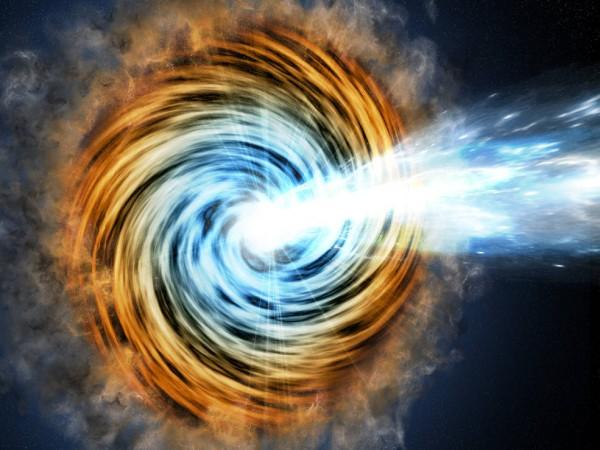
NASA's Fermi Gamma-ray Space Telescope recently discovered strong emissions of gamma radiations from an ancient group of five galaxies.
Also Read: NASA's OSIRIS-REx spacecraft to discover Trojan asteroids this month!
The gamma rays were found to be radiated by blazars, which are very compact regions surrounding supermassive black holes detected so far.
The powerful gamma ray emissions spotted had been given off from an extremely distant object when the universe aged 1.4 billion years, which is approximately 10 percent of its present age.
The research team was led by Vaidehi Paliya and Marco Ajello at Clemson University in South Carolina and included Dario Gasparrini at the Italian Space Agency's Science Data Center in Rome along with Roopesh Ojha, an astronomer at NASA's Goddard Space Flight Center in Greenbelt, Maryland.
"Despite their youth, these far-flung blazars host some of the most massive black holes known," Ojha said in a NASA statement.
"They developed so early in cosmic history challenges current ideas of how super massive black holes form and grow, and we want to find more of these objects to help us better understand the process," he added.
Giant and active elliptical galaxies possessing super massive black holes, which got a mass equivalent to one million times the Sun's mass or more, have blazars present in their core. Extremely strong tides of energy are given away by these black holes almost at the speed of light when any matter falls into it.
"The main question now is how these huge black holes could have formed in such a young universe," one of the researchers, Dario Gasparrini, from Italian Space Agency's Science Data Centre in Rome said.
"We don't know what mechanisms triggered their rapid development," he added.
The team of researchers, who carried out this discovery, is going to conduct in-depth research to find out more about it.
"We think Fermi has detected just the tip of the iceberg, the first examples of a galaxy population that previously has not been detected in gamma rays," said Marco Ajello from Clemson University in South Carolina, the US.
















